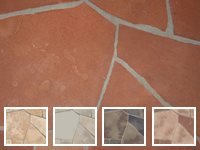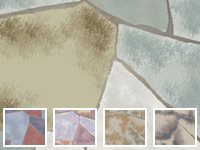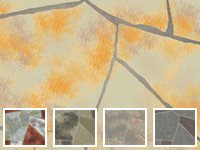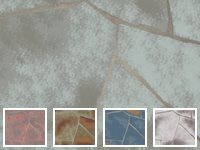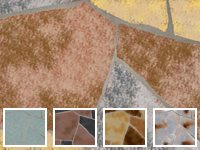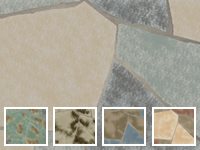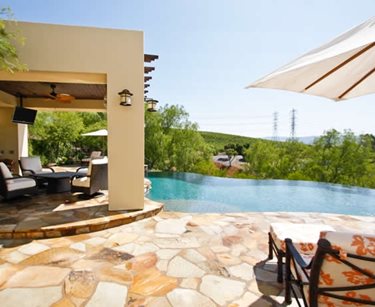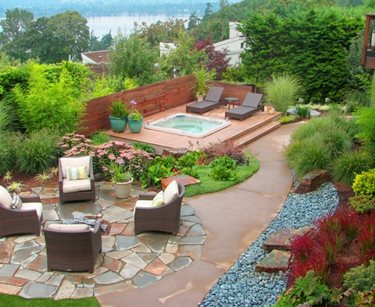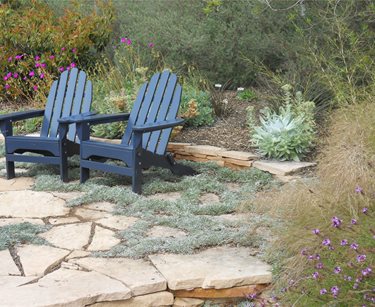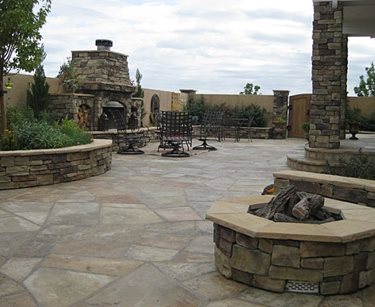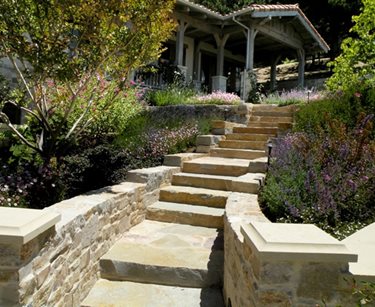Flagstone Color Chart & Inspiration
Compare examples of flagstone paving in a variety of colorsOriginating from sedimentary stone, flagstone comes in a variety of colors dependent upon the area of the country where it is sourced. Remember that any type of natural stone will have color variations, so no two pieces of flagstone are the same. Each stone has its own unique colors and markings, which is what makes it appealing to those looking for a variegated and natural-looking material.
To better understand what colors are available in your area, refer to this list of eight regions throughout the U.S. and Canada. For each region, you’ll find a sampling and description of the popular colors of flagstone found in those areas.
Flagstone Color Samples
Northwest
Flagstone is derived from sandstone, which is composed of mostly quartz. The colors from the northwest consist mainly of cool colors ranging from green to gray, however, it is common to see a natural mix of a bright warm color throughout. These are common colors of flagstone you can find in the Northwest.
West
It is only in the west where you can find Ash Fork the “Flagstone Capital of the World”. Flagstone has been quarried in the west region for centuries. The popular colors that originate from this area are the warm sandstone colors of the desert area. These are common colors of flagstone you can find in the West.
Central Plains
Lighter tones of brown, blue, and gray flagstone are found in the central region of the United States. Quarried mainly in Colorado, Kansas, and Montana, the stone of this region is light in color, high quality, and often shipped all over the country. The examples to the right are common colors of flagstone you can find in the Central Plains.
Great Lakes
Mainly quarried in Minnesota, the flagstone from this region consists of gray, brown and gold. The natural variations of the stone offer a unique detail to each individual stone. These are common colors of flagstone you can find in the Great Lakes area.
Northeast
Most of the flagstone from the northeast is cut from quarries in the North Central Pennsylvania Mountains. Since the region is home to numerous natural landforms, flagstone is available in nearly every color-the most popular being the Pennsylvania Blue Stone. These are common colors of flagstone you can find in the northeast.
Southeast
The Carolina slate belt has been the source of slate and flagstone even before their high demand. This unique belt has even-spaced flagstone bedding which make it an ideal resource within the southeast. The colors of the stone vary, but it is common to find darker colors in this region. These are common colors of flagstone you can find in the Southeast.
Western Canada
Quarries are spread throughout British Columbia along the Fraser River and provide flagstone in various tones of gold, brown, grey, and blue. Their earth tone colors bring a calming sense to any outdoor space. These are common colors of flagstone you can find in western Canada.
Eastern Canada
Southern Ontario and Quebec are the main locations of quarries in eastern Canada. Dimensional stone is one of Canada’s most produced resources and they are amongst the top importer/exporter of flagstone along, with the U.S. The examples at right are common colors of flagstone you can find in eastern Canada.
Flagstone Color Inspiration
The color you select comes down mainly to preference, but these tips will help you make your decision.

 Backyards
Backyards
 Front Yards
Front Yards

